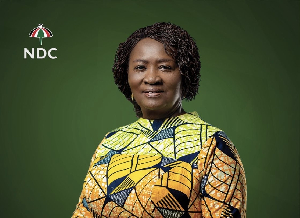Social Media has grown to be an extension of our lives. There is no single language that binds this millennial generation as well as Social Media does.
With an estimated 2.789 billion active social media users, the digital village is the gold mine of every organization. Unfortunately, most businesses are settling for the gold dust of using social media for Marketing, Advertising and sometimes PR, while the solid gold rocks remain unmined.
Social media is a vital asset for improving total organizational performance and achieving business goals. With a solid social business strategy, organizations can improve key business units such as Human Resource, Legal, Research, Product Development, Innovation, Customer Service, you name it!
So how does a social media strategy differ from a social business strategy Simply put, a social media (marketing) strategy details out how you will use social media to help achieve your marketing goals. Social media strategy is usually an off-shoot of the overall marketing strategy. Social business strategy or Social 360 however, is about using social media and social technologies to drive business performance across various business units.
This article will guide you through the various stages organizations go through as they mature on their social media journey. Understanding the stages is key to fully using social media to improve total organizational performance. As you identify where your business currently is, read on to learn practical approaches to adopting social media for various units within your organization.
Social Media Maturity Stages
This article outlines six(6) stages of social maturity that businesses in Ghana -and Africa at large- go through to become a social-centric organization or develop a social business strategy.
Unaware
Organizations, especially small businesses and some key governmental agencies in Ghana, are unaware of the benefit social media affords their business and as such remain resistant to using social media for business. Such organizations don’t have a Facebook Page, Twitter Account, WhatsApp business account etc. because they see no direct impact these can have on their business performance.
Aware
At this point, employees within organizations become aware of social media and create personal accounts on social media (eg. Facebook Page, Twitter Account, Instagram Account etc.) with no management support. Social media becomes ad-hoc. Some companies give social media “a try”, using social media without a concrete social media strategy, and measuring progress by collecting activity based metrics (likes, followers, comments, shares etc.) Socia media profiles are usually characterized by poorly crafted content with bad design, non-consistent design identity, non-frequent posting, use of bad language and not paying attention to what customers are saying on social media.
Engaged
Social media is used by the marketing or PR department of the firm at this point. Management recognizes the need for the services of a social media manager or digital marketing manager. Someone is hired or an agency is contracted to help manage social media activities; from strategy formulation, content curation, social engagement, campaign creation and management. However priority is not given to the creation of policy or governing structures to guide the use of social media. Also, social media activities are not entirely tied to overall organizational goals or revenue target.
Strategic
Use of social media for Marketing/PR/Advertising becomes strategic and is tied to overall marketing goals such using social media to attract leads, drive sales or purchase of product. Management is now in favour of using social media for Marketing/PR/Advertising. Companies at this stage may also invest in social media tools eg. Social media listening tools to monitor for sentiments, concerns, feedback etc about the brand. Companies employ the services of a consultant or digital marketing head to lead an in-house team to handle social and digital marketing. Social media community managers, content creators, creative designers etc are hired. Also, companies invest in tools such as content production and management (eg cameras, social media management software like Tweetdeck).
Formalized
Social media becomes formalized and is highly recognized by top management and at the boardroom level as an enabler of business objectives and performance. A central social media strategy or a social business strategy is developed to align with the vision and mission statement of the organization. The strategy is weaved across the various department of the organization (IT, HR, Customer Service, Finance, Product Development, Research and Development, Marketing/PR/Advertising, Legal, Sales). A governance structure and a social media policy is developed. At this point, social is considered in every strategic business decision management makes.
A sample strategy of a company at the formalized maturity stage is seen below:


Growth
Social media is used in improving key business units. At this stage, social media is applied to various units within the organization in the following ways:
Marketing/PR/Advertising:.......
Increase awareness of product, influence consideration, attract leads, and increase brand share of voice.
Customer Service:
Respond to customer inquiries via social channels (Facebook, Twitter etc. ). Keep customers engaged, delight customers and improve loyalty. Use social listening tools eg Google alert to track feedback, concerns from customers.
Sales:
Convert marketing qualified leads using customer relationship management system (CRM) to customers. Use LinkedIn as a social selling platform to engage directly with prospect.
Human Resource:
Use LinkedIn for recruitment and positioning the company as a great workplace. Invest in social media led performance management systems and internal collaboration tools to track achievement and improve teamwork.
Product Development / Innovation:
Inject feedback from gathered from customers using social media to improve product and services. Use social media to source ideas from social media audience to innovate on products and services.
Research:
Organize focus group research using company social media group or page to glean insight from questions or their discussions.
Legal:
Legal Unit helps in developing social media policy to guide the use of social media by employees in the organization. Social media policy will to prevent employees for making claims that subject the company to public ridicule and its associated sanctions.
IT:
Develop internal social media platform or intranet to improve collaboration and sharing among employees.
Finance:
Use social collaboration platforms eg. WhatsApp to discuss issues related to social media budgets in real time.
CONCLUSION:
As stated in the beginning of this article, understanding the stages of maturity is key to fully using social media to improve total organizational performance. Once you identify where your company is, adopt a suitable social business strategy to improve overall business performance!
About the writer: Gad Ocran is a freelance social media / digital consultant. LinkedIn/Gad Ocran Tel: 0248119530, Email: gadocran@gmail.com













